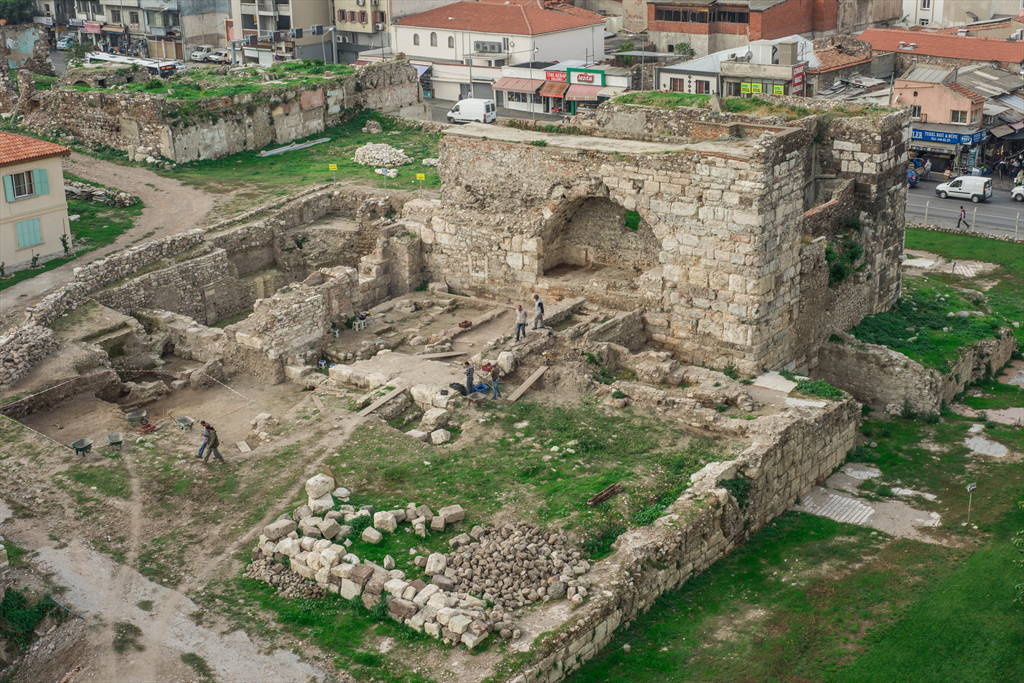Agora Roman Bath
Aristides, who lived in the 2nd century AD, wrote that there were numerous bathhouses and gymnasiums in Smyrna, and people couldn't choose among these beautiful bathhouses to clean themselves in. Bathhouses had a significant role in daily life, and they were mostly used in the afternoons by Romans and Smyrnians.
Of those numerous bathhouses mentioned by Aristides, only two could be found and revealed by excavations. Ruins of the bathhouse found in Basmane district provide very little information.
Second bathhouse is in northwest of Smyrna Agora, where you stand now. Considering the plan of the ancient city, this bathhouse was built at the corner of Agora North Street and Bouleuterion Street. Its proximity to Agora and the port shows that this was actually one of the busiest bathhouses of the city.
Two large parallel arches remain unearthed after demolition of the theatre and other buildings at this point were part of the primary load-bearing system of the bathhouse. Archaeological excavations unearthed only hot and warm rooms of this large bathhouse. It was revealed that the underfloor heating system was fuelled by two furnaces. Interconnections and space functions of the bathhouse is expected to be further clarified through research and excavations that will be conducted in years to come.
The most remarkable detail regarding the bathhouse structure is that it was built on vaulted galleries underneath. Two of these galleries could be located so far. As far as we understand, architects of this structure created this infrastructure by terracing the land, to claim some flat ground to build the bathhouse. Also, experts entertain the idea that these galleries were utilized for other purposes as well, such as cistern, alcove, and accommodation.

.jpg)
.jpg)
.jpg)




.jpg)
.jpg)
.jpg)


Comments
No comment left, would you like to comment?